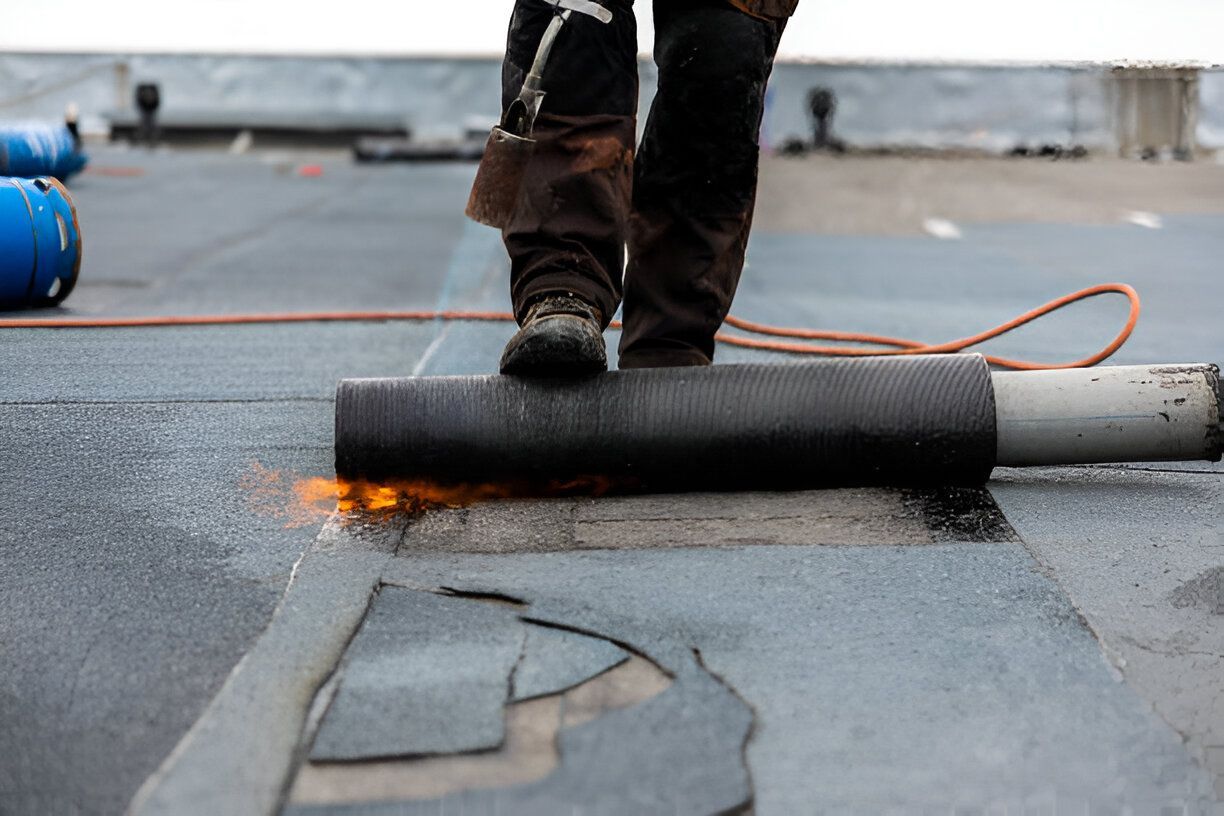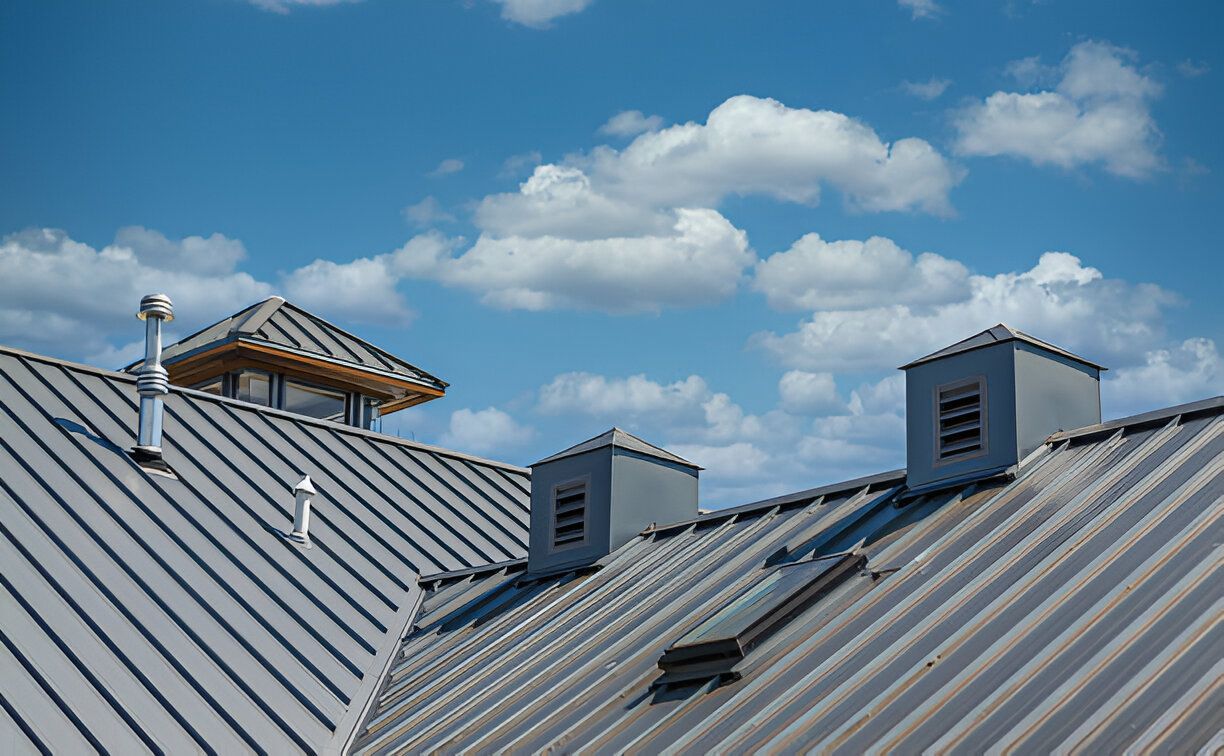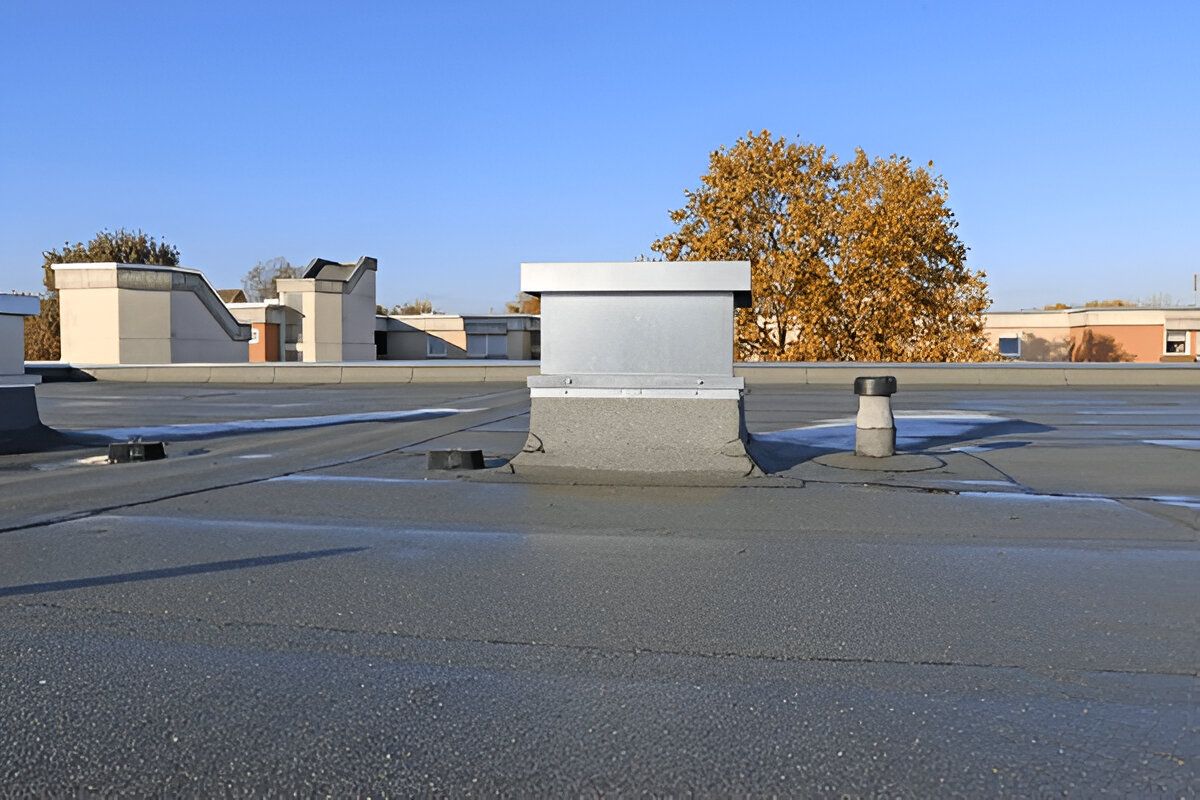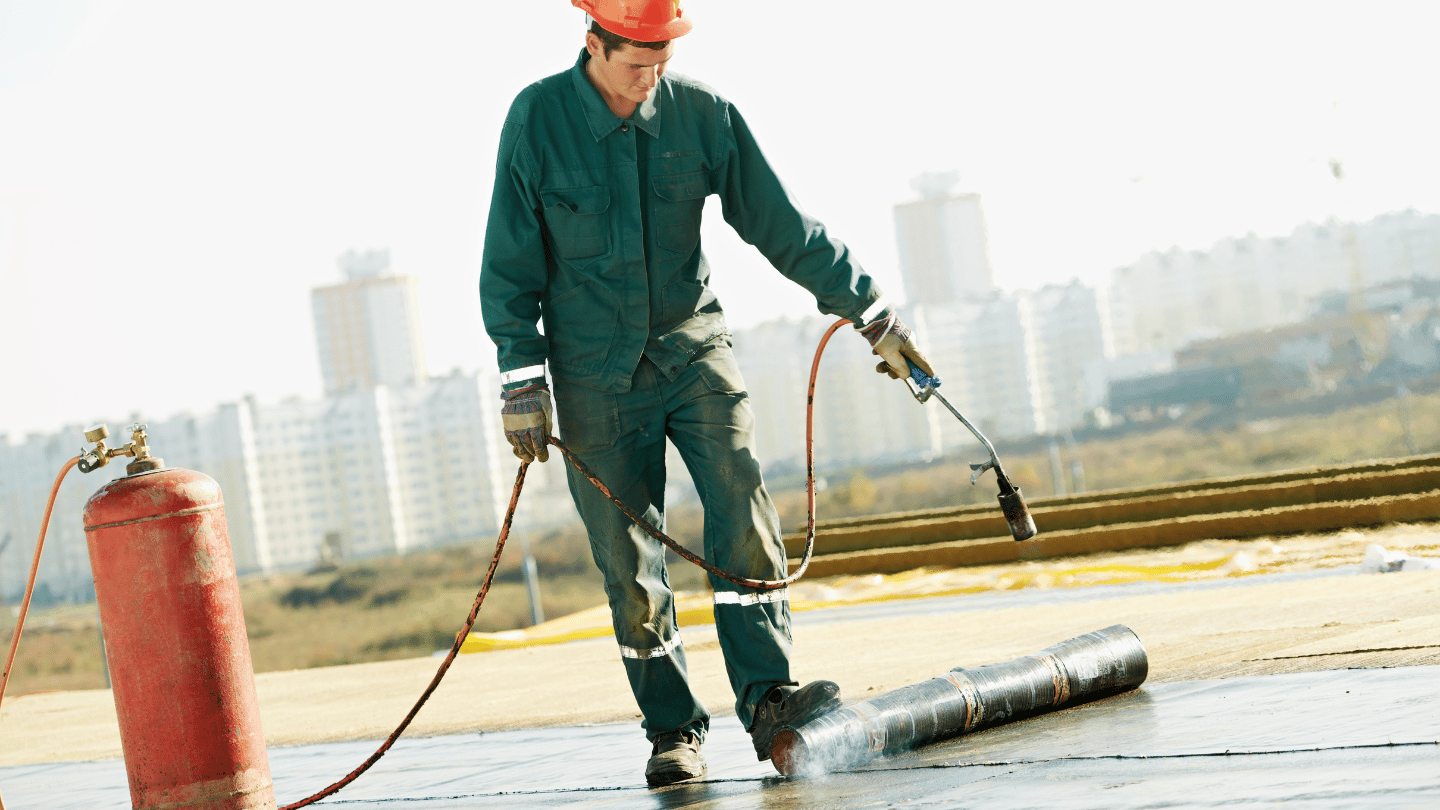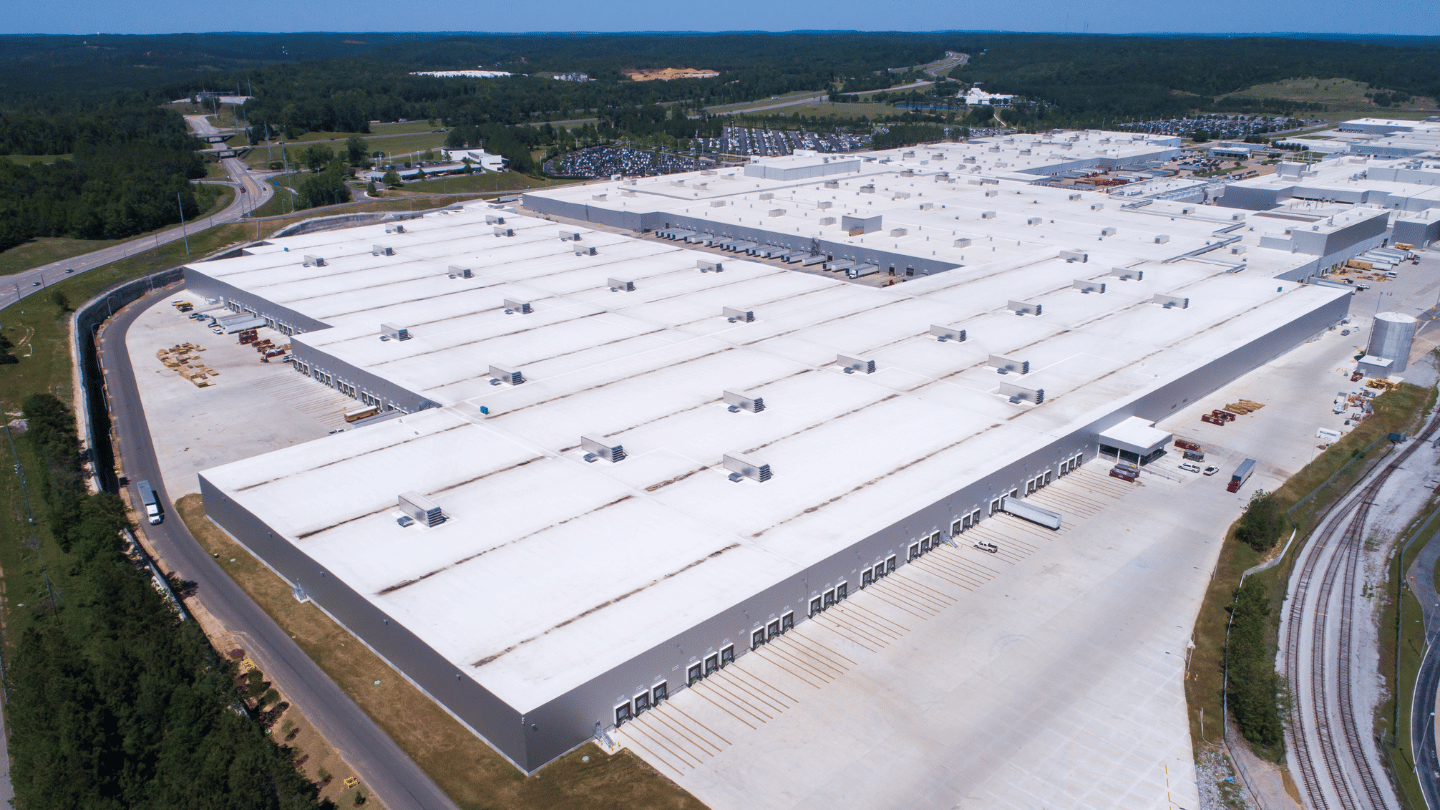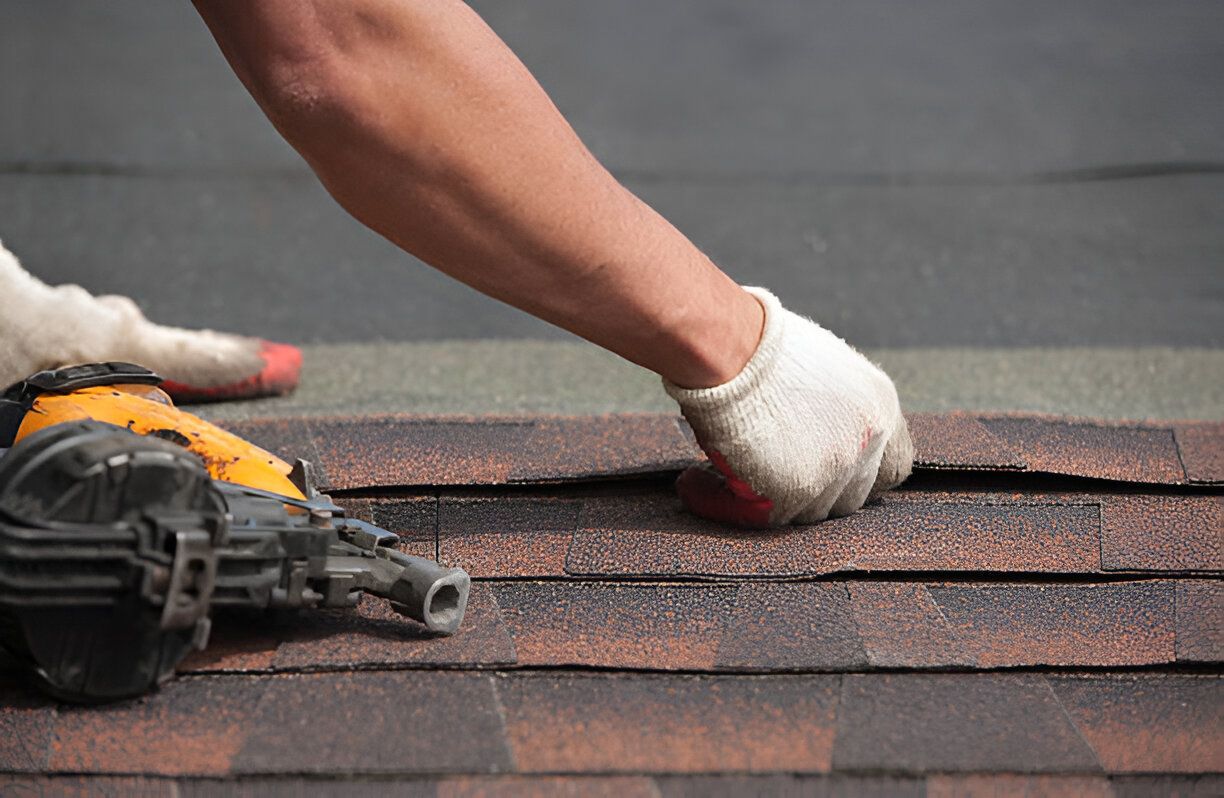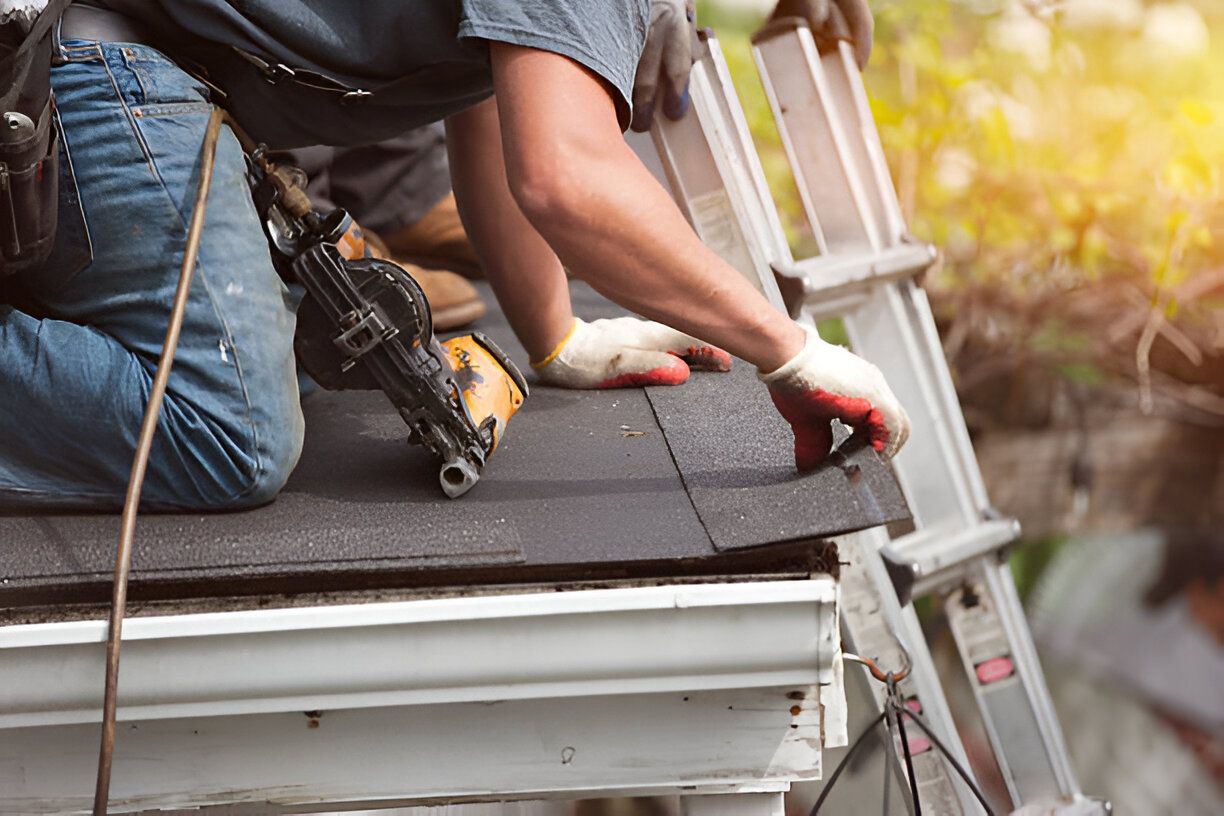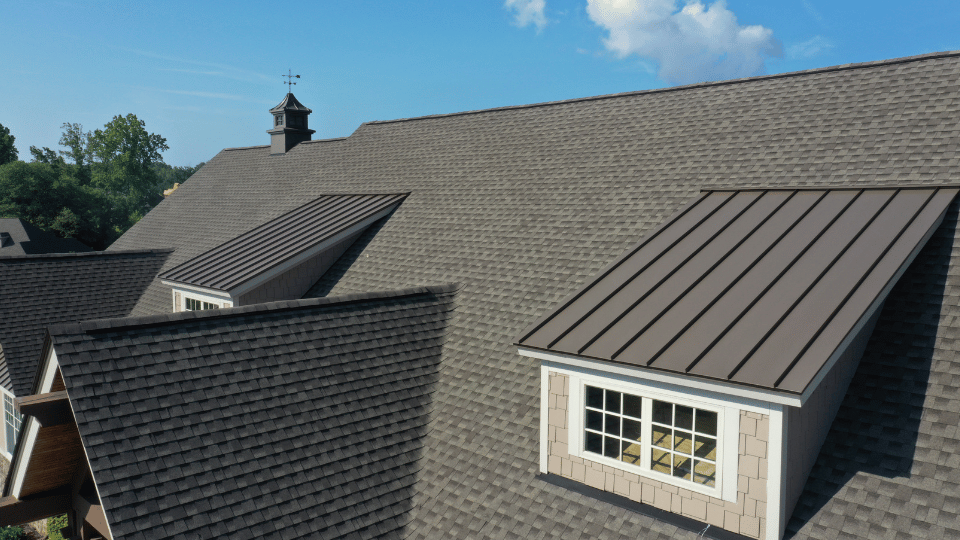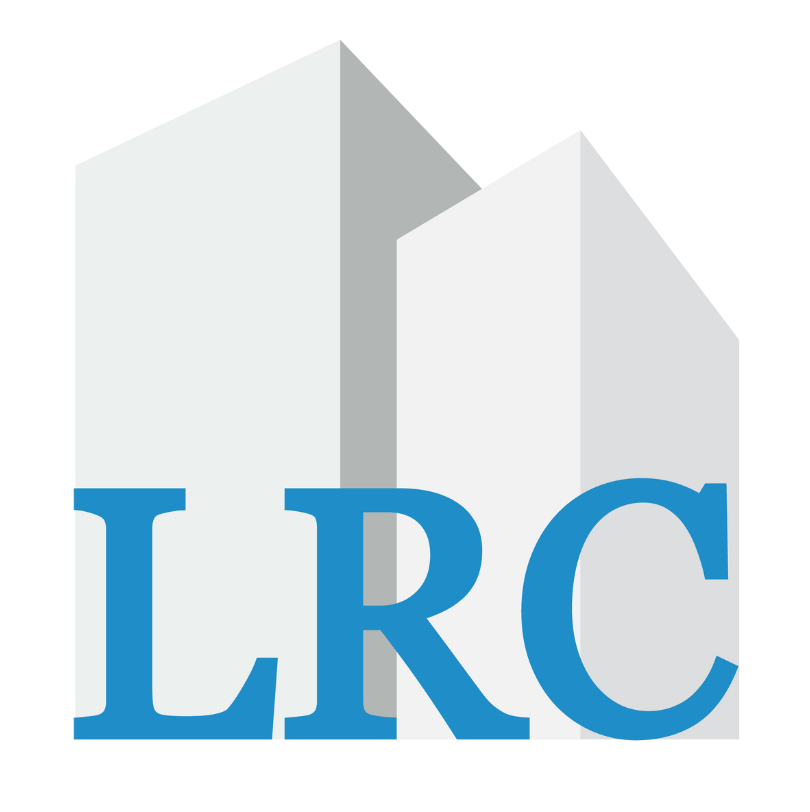Why Are Commercial Roofs So Expensive?


Why Are Commercial Roofs So Expensive? Exploring Key Factors
Commercial roof cost is influenced by high-quality materials, large sizes, complexity, and labor costs. This article breaks down each factor, offering you insights into why commercial roofs are so expensive in your roofing project costs.
Key Takeaways
- Commercial roof costs are driven by factors like high-quality materials, size, complexity, and labor, making replacements typically start at over $80,000.
- Sustainable materials may raise initial costs but offer long-term savings and efficiency, which is crucial for business owners to consider.
- Labor costs are significantly impacted by the need for specialized skills and safety compliance, adding to the overall expense of commercial roofing projects.
Why Are Commercial Roofs So Expensive? Exploring Key Factors
Grasping the intricacies of commercial roof replacement cost is crucial for business owners looking to uphold the integrity of their properties. The overall cost incurred during a roof replacement can be influenced by several aspects, including:
- Type and quality of materials
- Roof’s dimensions
- Design complexity
- Workforce charges
Top-tier materials such as EPDM, TPO, and PVC that are commonly utilized in constructing commercial roofs offer long-lasting endurance along with enhanced energy efficiency but tend to have elevated initial prices.
The aggregate financial outlay for installing a new commercial rooftop is significantly shaped by material expenditures, laborious efforts required due to size or design complexities — all leading up to its substantial price tag.
Prices involved in swapping out an existing commercial rooftop start upwards from $80,000 for modestly sized flat rooftops while possibly surging over $200 grand for more expansive slanted structures. Normally these costs are measured on a per square foot basis when calculating the potential investment needed.
Given that such considerable sums need to be committed to this venture, it’s paramount to thoroughly comprehend what factors elevate these charges so steeply. We will delve into each aspect responsible for inflating typical commercial roof replacement budgets.
Introduction
Many business owners wonder about the hefty price tag of commercial roofs, which are generally higher than residential options. This guide aims to provide insights into commercial roof replacement costs, helping business owners understand their expenses. Considering the benefits and making informed decisions ensures commercial roofing projects meet requirements and budget.
Commercial roofing systems differ significantly from residential roofs in terms of design, materials, installation processes, and maintenance requirements, including the roof system.
Material Costs and Quality
The overall expense of commercial roofs is greatly affected by the cost of commercial roofing material used. Durable and energy-efficient roofing materials such as EPDM, TPO, and PVC are associated with higher initial investment but contribute to a high-quality commercial roof. When it comes to replacing or choosing roofing materials for a new project, selecting these superior quality options can drive up costs significantly. Given that the roof plays an essential role in protecting a building’s integrity and optimizing its energy efficiency, this component often represents one of the most substantial investments during the construction or renovation process.
Understanding what drives up expenses is crucial for business owners planning their roofing projects. We will delve deeper into various elements like sustainability features that influence both material costs and quality of high-quality commercial roofs in forthcoming sections. This knowledge allows proprietors to make well-informed choices regarding their installations with clear insights into how certain decisions may impact their budgets while ensuring they select suitable materials for their needs.
High-Quality Commercial Roof Materials
Utilizing high-grade materials such as EPDM, TPO, and PVC is vital for the longevity and energy efficiency of commercial roofs. In comparison, asphalt shingles are often favored in residential roofing for their longevity, cost-effectiveness, and aesthetic appeal.
The expenses associated with roofing materials like EPDM, TPO, and PVC can vary. Typically selecting membranes with a greater thickness results in a higher cost.
Key commercial roofing materials frequently employed include:
- Metal Roofing
- TPO
- EPDM
- PVC
Each material offers unique advantages along with varying costs.
Built-Up Roofing also ranks among the preferred choices for commercial roofing alongside TPO, EPDM, and PVC. This choice mirrors the level of investment required. Committing to premium quality roofing materials tends to yield sustained benefits that compensate for their more considerable initial expenditure.
Sustainability Features
Utilizing sustainable materials often results in higher upfront expenses. These are balanced out by the subsequent savings on energy costs. The added attraction of commercial roofing with environmentally friendly materials lies not only in their potential for long-term financial benefits but also in their positive ecological impact, making them a strategic investment for forward-thinking entrepreneurs.
Opting for sustainability and high quality when selecting roofing materials guarantees that commercial roofs embody durability, offer enhanced energy efficiency, and uphold environmental stewardship.
Labor and Expertise
The cost of labor is a significant factor in the total price tag of commercial roofing endeavors, as they require specialized capabilities and certifications to manage their intricate nature. The necessity for elevated expertise arises from both labor-intensive aspects and design intricacies associated with commercial roof setups.
Firms such as Austermiller Roofing pledge to deliver prompt project completion and superior craftsmanship during roof replacement undertakings. In subsequent sections, we will delve into the required specialized skills and discuss why adhering to safety standards is crucial in executing commercial roofing projects.
Specialized Skills Required
Expertise in roofing systems can vary significantly, encompassing expertise in areas like shingle roofing, metal roofing or single-ply roofing. To mitigate the chance of injuries, roofers need to be adept at safely utilizing an array of specialized equipment.
Specializing in offering a range of solutions for commercial buildings, including those used for industrial and retail purposes, is a hallmark of Lancaster Roofing.
Safety Compliance
Roofing stands out as one of the most dangerous professions, necessitating strict adherence to safety measures to safeguard those on the job. Roofing contractors are required by law to follow OSHA standards that stipulate guidelines for fall protection and the use of personal protective gear.
Adhering to these safety regulations often results in considerable extra costs for roofing contractors, which includes expenditures related to both training and acquiring necessary equipment.
Size and Complexity of Commercial Roofs
The size of commercial roofs typically exceeds that of residential ones, resulting in higher expenditures for both roofing material and labor. The intricacies involved with a roofing project—comprising its design and the materials selected—substantially affect installation expenses.
This complexity tends to make commercial roofing endeavors more demanding compared to those involving residential roofs. Expanded surface areas necessitate additional materials and workforce. Intricate designs coupled with elements like HVAC systems Amplify costs.
Subsequently, we will delve into how expansive area dimensions along with elaborate designs and features impact the financial aspects associated with commercial roofing projects.
Large Surface Areas
Typically, the expanse of commercial roofs is considerably greater than that of residential roofs. This significant variation in scale distinguishes them from each other. The expansive surface area on commercial roofing necessitates a greater volume of materials for every square foot, which elevates the expense involved. For replacing a commercial roof, the cost spectrum per square foot spans from $10 to $14 at its lower end and reaching higher.
Commercial roofing projects are heavily influenced by both material requirements and labor demands when it comes to total expenditure—factors that business proprietors must meticulously consider during their budgeting process.
Complex Designs and Features
Constructing complex commercial roof structures necessitates greater thought and resources. Working on pointed slopes is more challenging than dealing with flat roofs or metal roofs, which offer advantages like lower initial expenses, improved energy efficiency, and an increase in usable surface area. Flat roofs are advantageous as they optimize square footage and afford additional space for equipment such as HVAC systems.
Adding features like HVAC systems can complicate the installation process on commercial roofs and escalate expenditures. These intricacies require meticulous planning to ensure that costs remain under control throughout the project’s duration.
Installation Process
The commercial roof installation process starts with a free inspection to establish an accurate estimate. Hidden costs can arise during roof replacement, impacting the total expenditure unexpectedly. The meticulous installation process ensures durability and effectiveness, significantly contributing to costs. Roof pitch affects pricing, with steeper roofs being more costly due to increased risk and difficulty in installation. The height of a building can increase roofing costs due to the need for special equipment to transport materials.
Existing roof conditions can significantly impact replacement costs, especially if extensive repairs are needed. Factors such as roof access can significantly affect overall costs. Multiple layers, HVAC systems, skylights, and custom features can contribute to the complexity and cost of commercial roofs.
Tearing down old roofing, removing obstacles, and installing add-ons can further increase the final price of a roofing job. Built-up roofs involve labor-intensive and hazardous work with heated asphalt, increasing installation costs.
Pre-Installation Inspections
Professional routine inspections are crucial for identifying potential roof issues. Specialized labor is essential to ensure high-quality and safe roofing installations. These inspections help business owners plan for initial expenses and avoid unexpected costs during installation.
Removal of Old Roof
The elimination of old roofing material represents a substantial portion of expenses, necessitating specialized labor and appropriate disposal measures. The process of dismantling an existing roof demands considerable effort as well as costs related to waste management, which are vital considerations for any commercial roofing project. It is imperative that skilled personnel carry out the removal work on the old roof to guarantee both safety and efficiency.
In the context of planning a commercial roofing endeavor, it’s essential to account for both labor and waste disposal expenditures since they considerably influence the final budget. These elements play pivotal roles in making informed decisions regarding such projects.
Waterproofing and Other Preparations
Ensuring the commercial roof is waterproofed effectively safeguards against subsequent water damage. This crucial step enhances both the durability and dependability of the roofing system.
While incorporating waterproofing does increase initial installation costs, such measures are essential for securing your investment in a commercial roof by guaranteeing its resilience to weather conditions and consistent performance over its lifespan.
Maintenance and Warranty Considerations
Annual inspections and roof cleanings are essential maintenance activities that can prolong the lifespan of a commercial roof. Any damage incurred to structural parts during these tasks could escalate both material expenses and installation fees. Flat roofs, in particular, are prone to water-related damages which, if left unattended swiftly, may result in expensive repair works. Utilizing high-quality materials for construction might reduce operational costs over time because of their enhanced energy-efficient properties.
The forthcoming subsections will delve into the routine upkeep necessities and advantages associated with warranties that impact the extended-term financial aspects concerning commercial roofing systems.
Regular Maintenance Needs
Routine upkeep duties for commercial roofs encompass:
- Leak examinations
- Assessing and rectifying water accumulation
- Eliminating snow buildup
- Purging gutters
Built-up roofing installations necessitate purification and assessments for accumulated water every four to six years. In contrast, flat roofs require greater ongoing maintenance, which results in increased total expenses throughout their lifespan.
When it comes to metal roofing systems, the typical cost of maintenance represents around 3.5 percent of the initial installation expenditure. Conversely, asphalt shingle roofs can see maintenance costs constituting as much as 28.5 percent of the original installment price tag over time. Disregarding regular roof care can escalate into major complications that drive up future financial burdens.
The task of maintaining modified bitumen roofing is complex due to its intricate repair needs. Conducting comprehensive evaluations prior to any roofing endeavors can reveal underlying issues that may amplify subsequent expenditures if not managed proactively, emphasizing the significance of consistent upkeep checks. Regularly maintained commercial rooftops are essential for extending their functional longevity through systematic inspections and interventions when necessary.
Warranty Benefits
Warranties for roofs differ regarding their length and the extent of coverage, which depends on the materials employed. Warranties from manufacturers usually protect against material defects and sometimes even extend to cover craftsmanship.
These warranties are crucial in safeguarding your investment in commercial roofing, offering business proprietors reassurance.
Though acquiring warranties might contribute to upfront costs, they present considerable value by offering protection and mitigating potential future costs.
Local Factors Impacting Costs
Understanding the unique demands and local regulations can assist in creating a more accurate budget for commercial roofing endeavors. The necessary thickness and number of insulation layers contribute to the overall expense, since adhering to energy codes might necessitate thicker insulation solutions. In Flower Mound, Texas, material costs and total roofing expenditures are greatly affected by specific weather patterns as well as regional building standards.
Subsequent sections will delve into the ways that both climatic factors and building regulations within Flower Mound, Texas play critical roles in determining the costs associated with commercial roofing projects.
Weather Conditions
Texas’ extreme weather patterns necessitate the use of robust roofing materials to withstand hailstorms and high winds. Roofing materials in Texas must be resilient to severe weather challenges like high winds and hail.
Materials that reflect sunlight are preferred to minimize heat absorption in Texas’s hot climate.
Building Codes and Permits
In Texas, local mandates often stipulate the use of certain roofing systems designed to improve energy efficiency, which can influence the total expenses associated with commercial roofing undertakings.
The necessity for particular kinds of roofing materials in compliance with these regulations may cause variations in project expenditures. Adhering to codes and securing permits might also prolong the duration of projects, consequently affecting labor costs.
The financial implications on commercial roofing projects are significantly affected by local regulatory and permit obligations that tend to elevate overall costs.
Economic Influences
Economic patterns significantly affect roofing prices, while prevailing market conditions have a considerable impact on these expenses. The cost of materials is prone to variation in response to fluctuating market trends. Shortages in both materials and skilled labor have been challenges within the roofing industry.
In Texas, roof replacement expenditures are notably influenced by the state’s distinct local labor markets. This results in substantial variations in labor rates for commercial roofing across different regions, consequently affecting total costs. Additional charges may arise from code requirements and waterproofing necessities that escalate material expenses.
Subsequent sections will delve into how fluctuations in the availability of materials and changes within the labor market influence commercial roofing costs.
Material Shortages
Disruptions in the global supply chain have the potential to drive up expenses associated with roofing materials. This is primarily due to restricted availability causing increased costs for these essential construction items.
Shortages of materials within the supply chain can greatly amplify the prices of roofing materials, highlighting a significant escalation in costs triggered by such deficits.
Labor Market Fluctuations
The cost of commercial roofing can escalate due to a shortage of qualified workers, particularly during economic slumps. The demand for skilled labor plays a crucial role in determining the prices for commercial roofing endeavors and these expenses often rise when there is a shortage.
During times when there is an elevated demand or a lack of available workers, labor costs related to roofing can experience substantial growth.
Contact Lancaster Roofing for Expert Solutions
Should you be in search of top-tier Flower Mound commercial roofing services, Lancaster Roofing stands as your premier choice for a roofing contractor within Flower Mound and the broader Northern Dallas-Fort Worth metroplex. Their extensive offerings include specialized roof repair, replacement, and urgent roofing needs designed to cater precisely to your unique situation.
For an obligation-free estimate that showcases their dedication to superior roofing outcomes, reach out to Lancaster Roofing. You are welcome to initiate contact either by dialing (214) 247-6388 or sending an email inquiry to info@lancasterroofingtx.com.
You can find their offices situated at 1401 Spinks Rd., Flower Mound, TX 75028—should you prefer a direct consultation regarding your commercial roofing concerns.
Summary
To summarize, the significant expense associated with commercial roofs can be attributed to several determinants which include the caliber of materials utilized, labor costs, dimensions and intricacy of the roof design, as well as prevailing economic circumstances within a locale.
Business proprietors who grasp these factors are better equipped for judicious planning and decision-making in regards to their roofing endeavors. Allocating funds towards superior quality materials coupled with proficient workmanship yields enduring advantages that justify upfront investment. For comprehensive service excellence pertaining to your commercial roofing requirements, count on Lancaster Roofing’s professional expertise.
Frequently Asked Questions
Why are commercial roofs more expensive than residential roofs?
Commercial roofs are pricier than residential roofing due to their larger size and complexity, which demand specialized materials and skilled labor.
This ultimately drives up the overall costs.
What are the most common high-quality materials used for commercial roofs?
For commercial roofs, you can count on high-quality materials like EPDM, TPO, PVC, and metal, all known for their durability and energy efficiency.
Choosing any of these will give your roof a long-lasting performance.
How do local weather conditions in Texas impact commercial roofing costs?
Local weather conditions in Texas significantly increase commercial roofing costs due to the need for durable materials that can handle severe weather like hailstorms and high winds.
This means investing more upfront for long-lasting protection is essential.
What factors contribute to the labor costs in commercial roofing?
Labor costs in commercial roofing are primarily driven by specialized skills, safety compliance requirements, and the complexity of the installation process.
This means that the more complex the job, the higher the labor expenses will be.
How can I contact Lancaster Roofing for a commercial roofing project?
CONTACT USYou can easily reach out to Lancaster Roofing for your commercial roofing project by calling them at (214) 247-6388, emailing info@lancasterroofingtx.com, or visiting their office at 1401 Spinks Rd, Flower Mound, TX 75028.
Ask for Jimmy!

